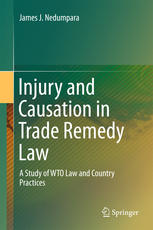

Most ebook files are in PDF format, so you can easily read them using various software such as Foxit Reader or directly on the Google Chrome browser.
Some ebook files are released by publishers in other formats such as .awz, .mobi, .epub, .fb2, etc. You may need to install specific software to read these formats on mobile/PC, such as Calibre.
Please read the tutorial at this link: https://ebookbell.com/faq
We offer FREE conversion to the popular formats you request; however, this may take some time. Therefore, right after payment, please email us, and we will try to provide the service as quickly as possible.
For some exceptional file formats or broken links (if any), please refrain from opening any disputes. Instead, email us first, and we will try to assist within a maximum of 6 hours.
EbookBell Team

0.0
0 reviewsThis book addresses injury and causation issues in the context of antidumping, countervailing duty (CVD) and safeguard investigations that are covered under the WTO. The book traces the origin and the negotiating history of injury and causation in trade remedy instruments and examines how this requirement evolved in the United States and more specifically in the GATT as part of the Kennedy Code, the Tokyo Codes and later the Uruguay Round negotiating texts. The book demonstrates that terms such as “principal cause,” “substantial cause” and “a cause in and of itself” are not necessarily warranted in such instruments. In the light of the experiences of key users of trade remedy instruments and the WTO Doha Round Rules negotiations, the book argues that causation determination does not require mathematical precision. Econometric or quantitative tools may be suggested, but such tools need not undermine the policy-laden nature of trade remedy instruments. Accordingly, the book suggests the use of weak-necessity and strong sufficiency test as a potentially viable causative framework with regard to injury and causation in trade remedies.